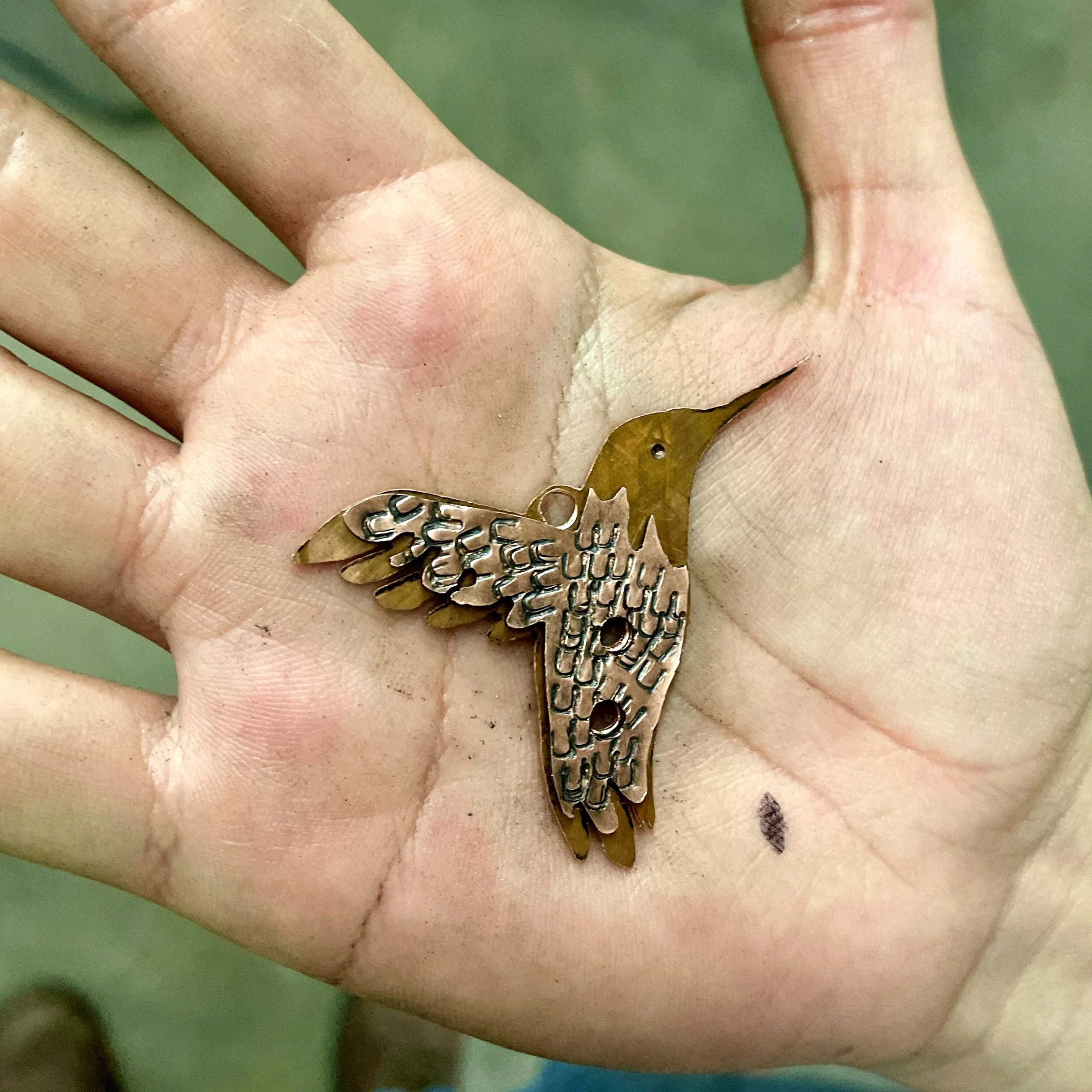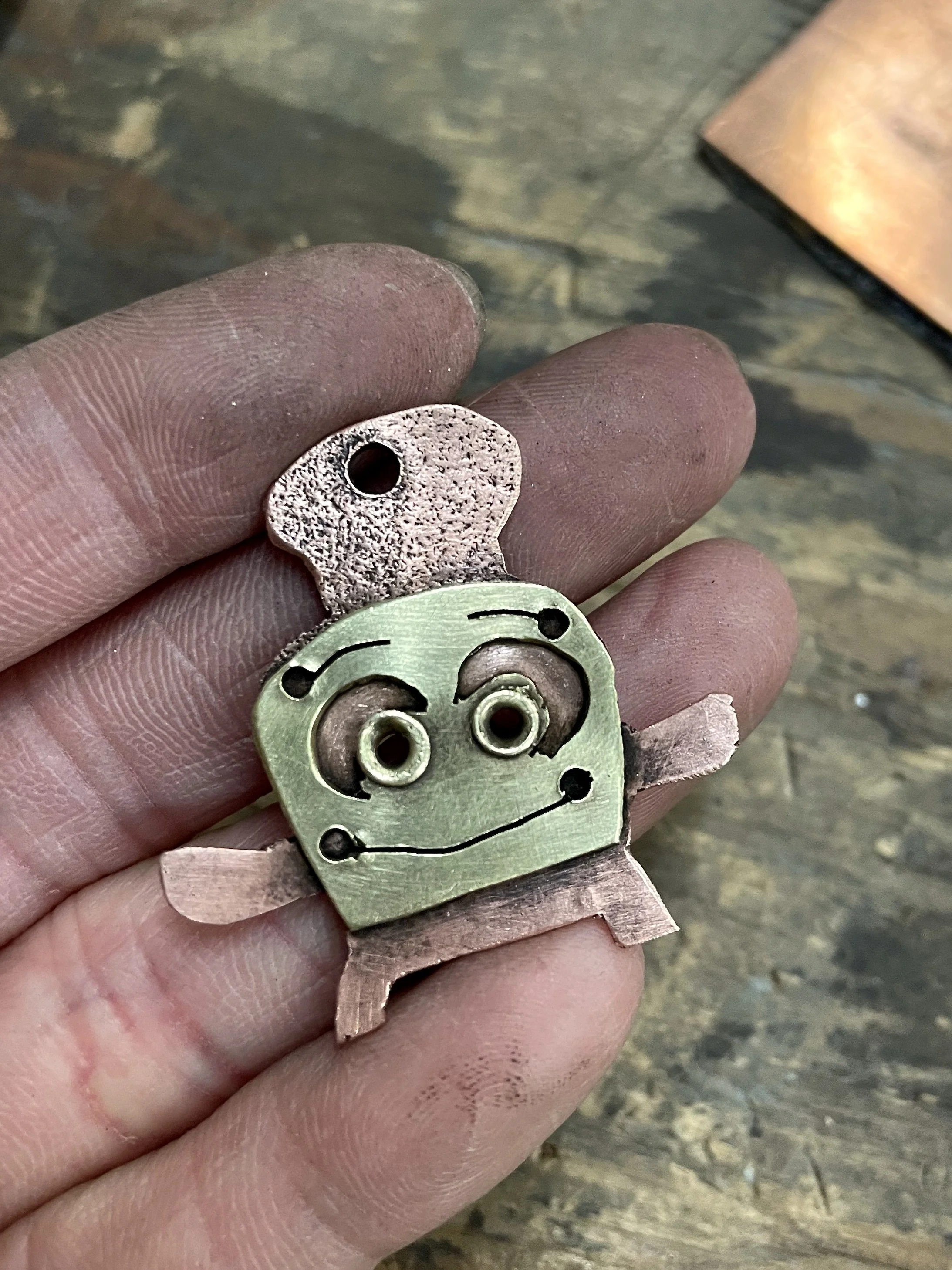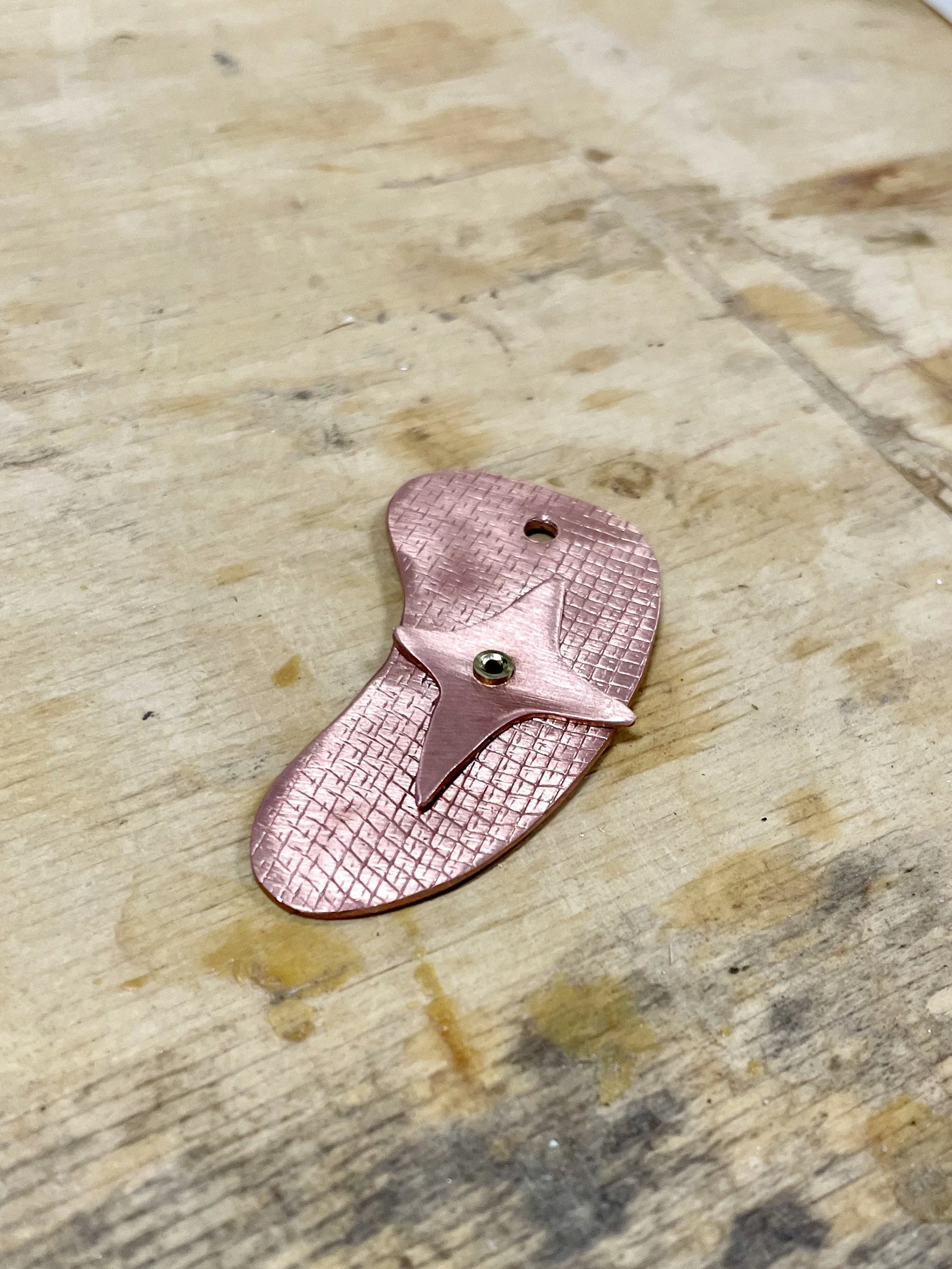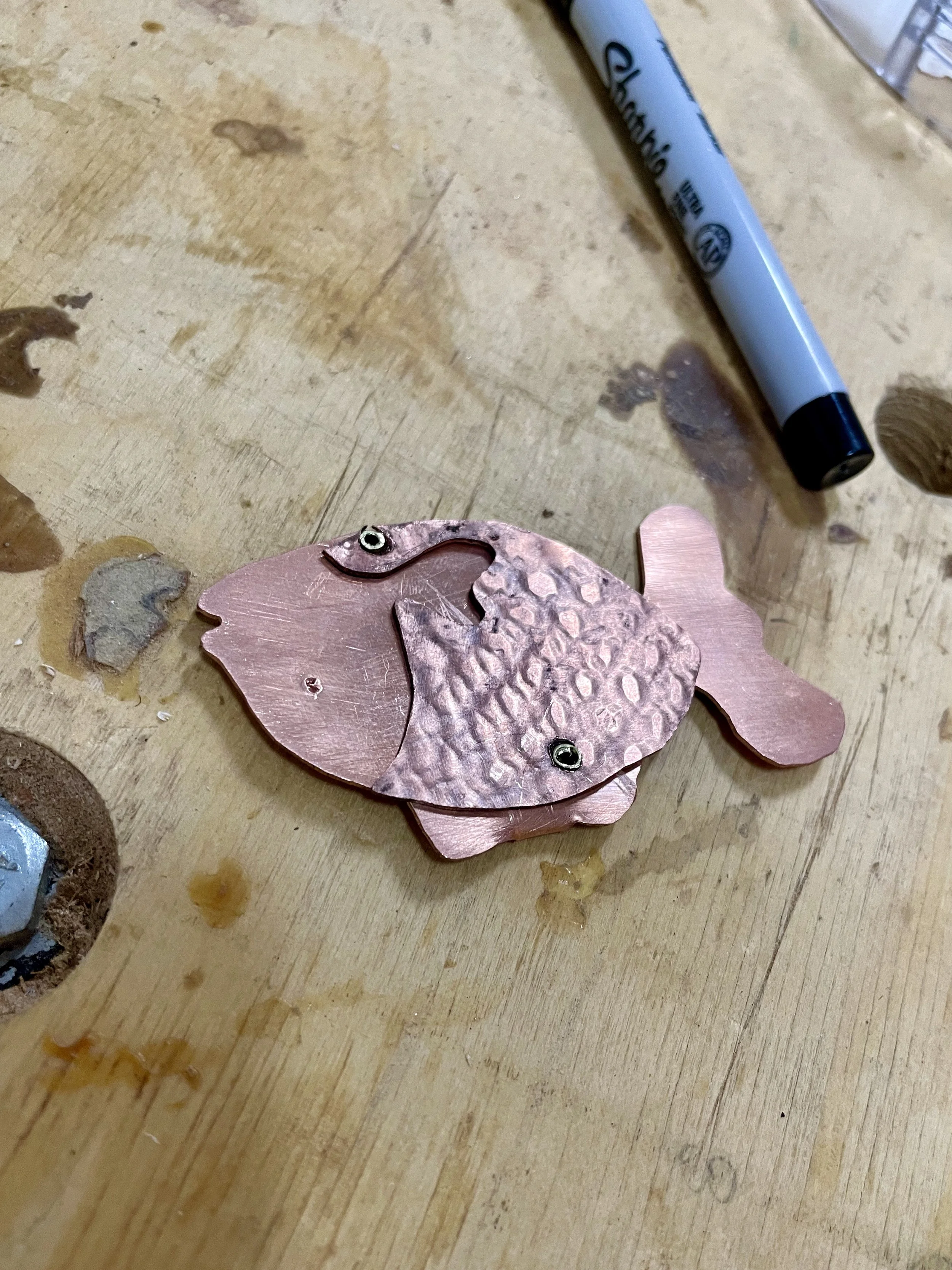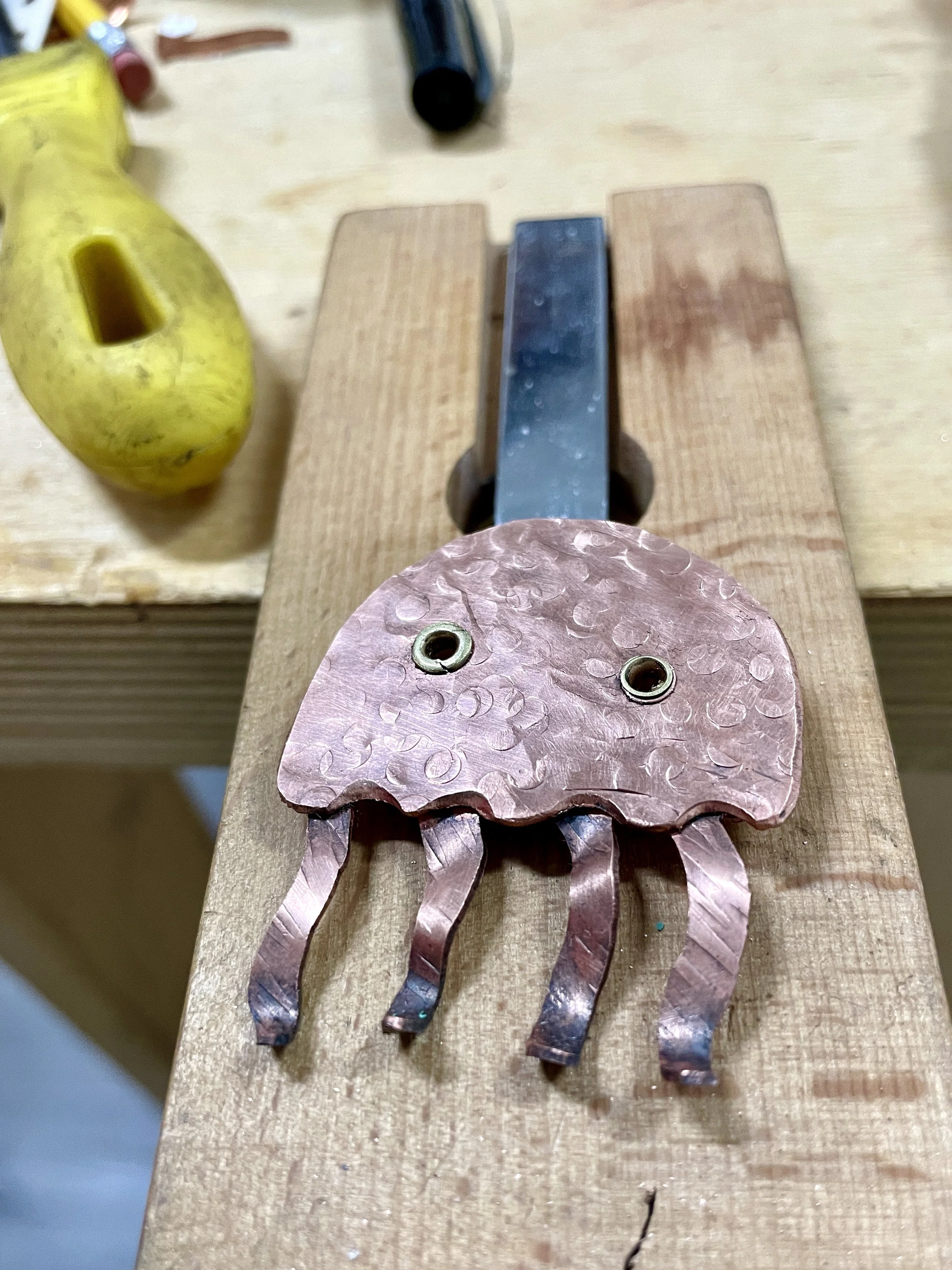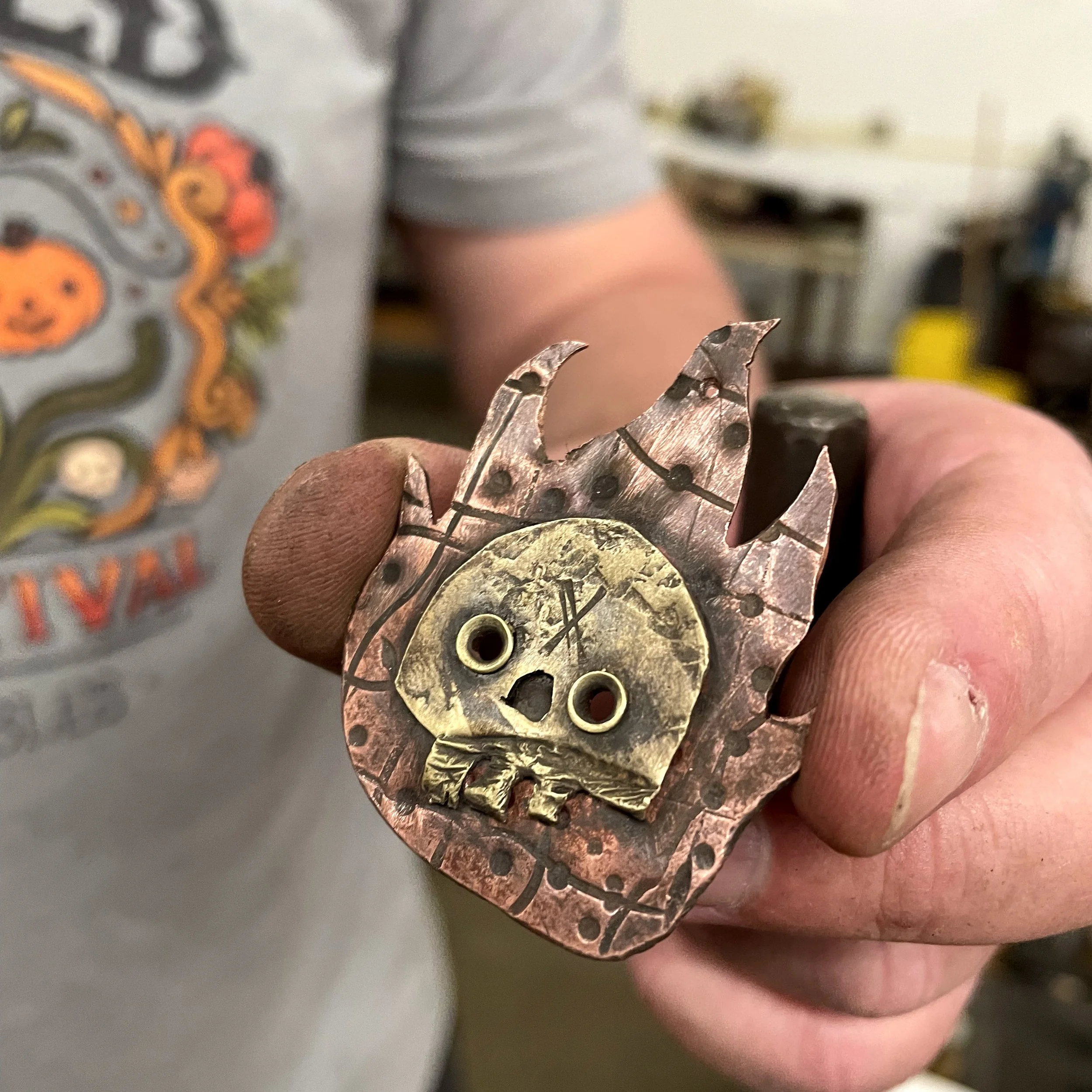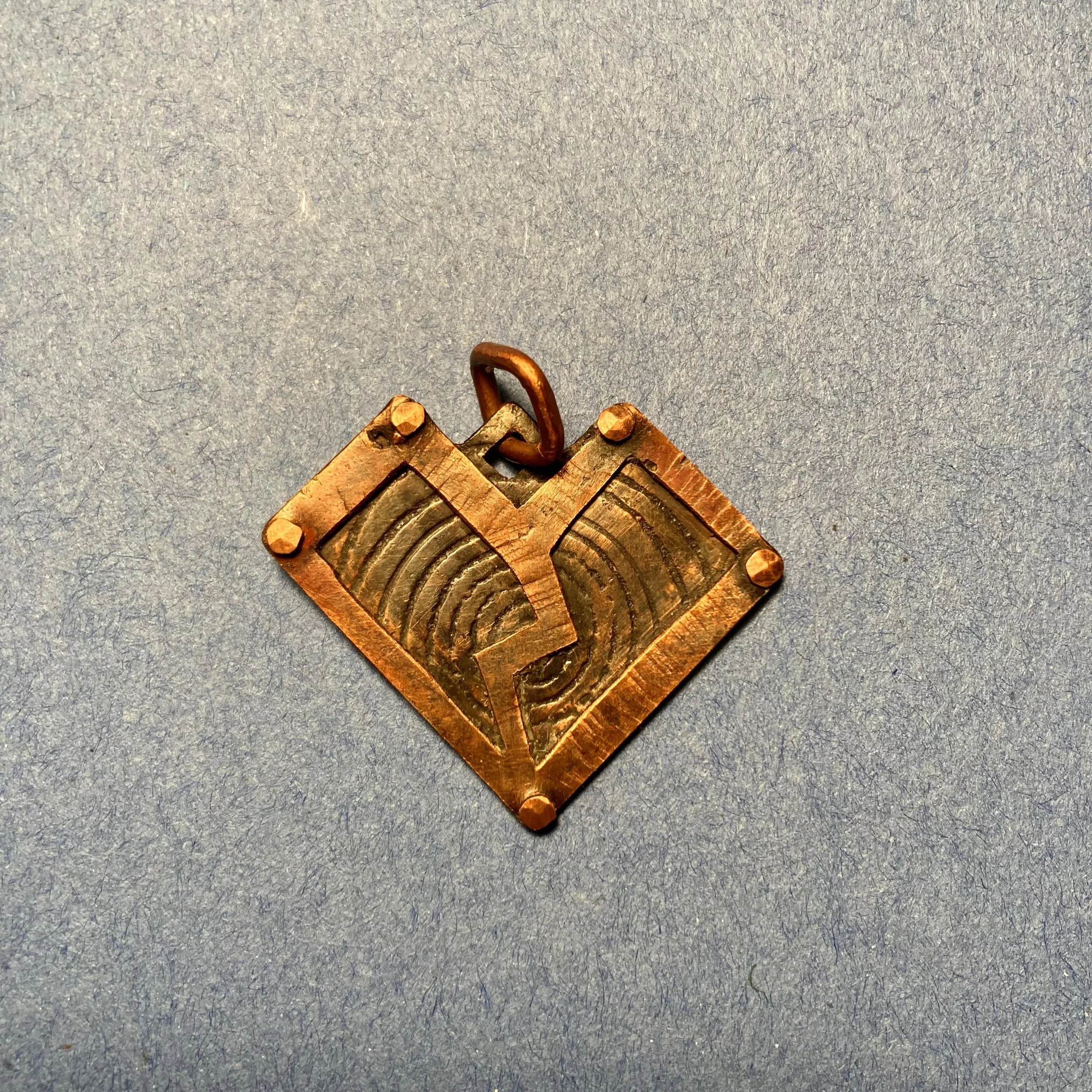Class fee includes raw materials and access to all equipment listed below.
Tools/ supplies list:
Copper Sheet (3x3, 22g)
Pencil, Eraser, Sharpie
Blank Stickers
Torch
Annealing Pan
Pickle
Copper Tong
Roller Mill
Bench Pins
Jewelry Saw
Saw Blades
Cutting Lubricant
Ring Clamp
Metal Files
Flex Shaft & Bits
Center Punch
Caliper
Rivets: Brass tubings
Riveting Hammer
Anvil or Bench Block
Pliers
Wire Cutters
Patina
Sand Paper or Steel Wool
Safety Goggles
Dress code:
Please wear something without dangly big sleeves. If you have long hair, please wear it up. Closed-toe shoes are highly recommended in case you drop it like it’s hot. Aprons optional.
Class Rundown:
12:00pm
· Meet & Greet, Briefing, Design Tips
· 1st demo- Annealing and Texturing1:00 pm
· 2nd demo- Sawing, Filing & Sanding
2:00 pm
· 3rd demo- Drilling & Riveting3:00 pm
· 4th demo- Patina Finishing3:45 pm
· Wrapping up & Photo Time
Things to remember for DESIGNING:
Since we will be connecting the top and the bottom layers with rivets, keep in mind to leave enough space around where you want your rivets to be, so that you won’t accidentally drill through areas that are too narrow.
Minimize extremely complex shapes unless you are in for a little bit of a sawing challenge!
Sometimes your first idea is the best idea! Overthinking kills authenticity.
Things to remember for ANNEALING:
Goggles on!
Have the tong ready before you start heating up the metal so you don’t accidentally grab hot metal with your hands.
Keep the flame on the entire piece evenly.
Look for the cherry red inner glow.
Annealed non-ferrous metal stays soft until work hardened.
Things to remember for TEXTURING:
Annealing is a must for roller printing, optional for stamping.
Anneal as many times as needed depending on how complex of a pattern you want to achieve.
Use anything you don’t mind destroying to create a fun pattern! Corn husks, leaves, lace, sandpaper, old events flyers are a few examples that you might already have at home.
Things to remember for SAWING:
Goggles on!
Make sure your chair is set at a comfortable height.
Saw blade teeth go outward and downward.
Check for tightness with a TING! No ting, no tension. No tension, no action.
Relax! Breathe! No death grip!
Up & down motions instead of forward force (Think band saw or sewing machine).
Slow & steady while making turns. Rotate the sheet, not your saw.
Not the end of the world if you can’t follow the line on the first try (or as many tries as you may need).
Things to remember for DRILLING:
Goggles on!
Center punch before you drill! Don’t skip this!
Find a drill bit that is the same size of or just a tiny teeny bit larger than your wire. Size does matter for riveting.
Clean up excessive metal around the edge of the hole or you’ll have a sharp pendant that nobody wanna wear!
Things to remember for RIVETING:
Rivet length should be slightly longer than the grip length (thickness of the pieces you are connecting together) but no more than 2 times of it.
Suggested formula:
Grip Range x 1.5 = Rivet Length
Example: If my top piece and bottom piece are both 2mm thick, my rivet length should be (2mm + 2mm) x 1.5 = 6mm
Mushroom rivet: Be mindful of the angle your hammer is positioned so that you can avoid leaving unwanted hammer blows on your piece.
Tube rivet: Make sure you are not flaring one side too quickly because you will draw up too much material on that side and leave not enough for the other side.
Things to remember for FINISHING:
Touch the entire piece all over with your fingers and look for sharp areas. Nobody wants an ouchy necklace!
High contrast will make the silhouette pop so don’t be afraid to play with different combos! Dark vs light, smooth vs texture, matte vs shiny… the world is your oyster!!
Practice makes progress!! Don’t forget that you are here to have fun😉
Stay in touch for future workshops, events and more!
To shop my creations
https://www.chloeography.com/
To say hello!
hello@chloeography.com

